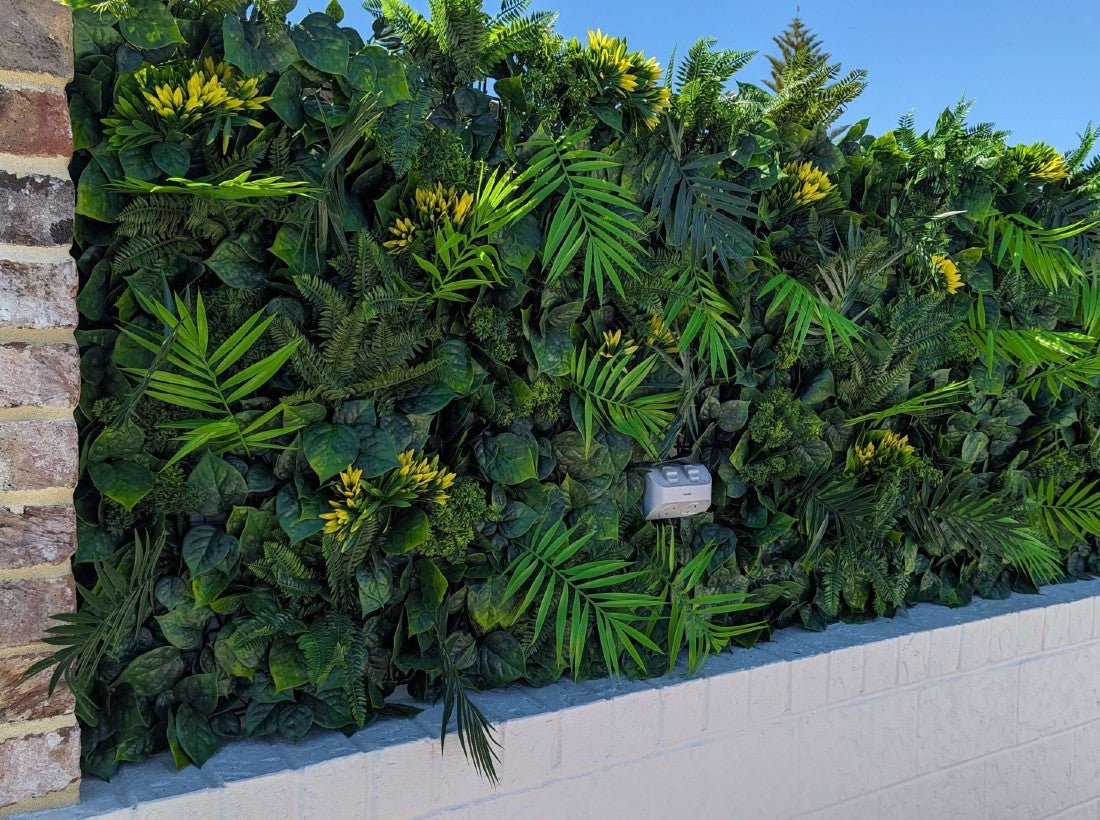The last time you admired your friend’s impeccably decorated living room, you couldn’t help but marvel at their lush indoor garden. You might have also felt a tinge of envy at their ability to keep all those plants alive.
Then, it hit you like a sunbeam - that greenery isn’t real!
It’s fooled many before you and it will fool many after you, too. Enter the masters of deception - artificial plants.
So what kind of sorcery is this?
What are fake plants made of that makes them nearly indistinguishable from the real deal?
Well, with over a decade of experience, we’re here to pull back the curtain on faux greenery. And we’re very eager to share our insights.
Let’s dig in!
Artificial Plant Material Through History
The history of artificial plants takes us on a memorable journey through time. It traces the evolution of materials and craftsmanship that have given rise to the lifelike fauxliege we see today.
But since we’ve already written a blog on the history of artificial plants, we won’t drill into too much detail here. Instead, here’s a brief overview of how fake plants originated and how their materials have changed throughout the years:
- The Ancient Egyptians and Romans first began manufacturing fauxliege by crafting flowers from colored horn plates and wax.
- The Chinese introduced flowers made of silk to appease the elite and encourage them to decorate their homes.
- In the 18th century, the French, British, and Americans began crafting silk flowers, establishing a new global industry.
- The Victorian Era shifted towards textile-based artificial flowers fueled by the love for ornate decor.
- In the 1920s, manufacturers introduced celluloid, but its flammability marked its swift downfall.
- The 20th century brought about a game-changer - plastic, a material that offered both affordability and durability.
Since then, fauxliege has become more than a decoration. Today, it’s a statement of style, sustainability, and environmental consciousness.
What Are Artificial Plants Made Of?
Modern artificial plants use a variety of quality plastics and fabrics during production. While manufacturing processes vary from country to country and even factory to factory, some common materials include:
- Polythene (PE) - the most prevalent form of plastic that lends well to repeat recycling. It’s most often used for flower and leaf stems.
- Polystyrene - an affordable material ideal for packaging and potting artificial plants, as it allows moisture drainage.
- Polyester - a low-cost, long-lasting fabric for creating realistic petals. It’s a staple because it accepts and retains glues and dyes.
- Rubber - this material responds well to UV sprays and treatment on top of being durable and easy to source.
- Wood - real wood appears in trunks or stems of artificial plants for a more lifelike presence.
- Metal - wires provide adequate structural support to shape and position the faux plant.
- Silk - a versatile material widely used for artificial petals and leaves.
But that’s not all there is to the topic - we can’t neglect the differences between plastic and silk flowers now, can we?
Let’s get to the meat of it!
What Are Plastic Plants Made Of?

Peruse our collection of artificial green walls and you’ll notice our soft spot for high-quality plastic fauxliege.
Plastic artificial plants are the modern variation of faux greenery. They contain a blend of synthetic polymers, mainly polyethylene (PE) and polyester. These materials are inexpensive, durable, and weather-resistant.
The marriage of these materials allows professional manufacturers to mold and shape leaves, stems, and petals into lifelike forms that resemble real plants.
What’s more, plastic artificial plants are a breeze to maintain - even a newbie fauxliege enthusiast can enjoy their beauty right off the bat.
What Are Silk Plants Made Of?

While you might expect silk to be the main component of silk plants, modern variations often use synthetic fibers like viscose and rayon. Or, you’ll find faux plants containing cotton and feathers, which also lend well to a realistic appearance.
Artisans use natural dyes and pigments to recreate the vibrant colors of living plants. Then, they incorporate wires or plastic/wood bases for structural support.
But this lifelike appearance demands a bit more TLC, including regular dusting and fabric protector application to keep them looking fit as a fiddle.
How Are Artificial Plants Made?
As we mentioned earlier, there isn’t a one-size-fits-all approach to manufacturing artificial plants. Of course, the production of artificial flowers differs from that of lush greenery or silk plants.
What remains consistent across all these processes though, is the crucial role of design. Professional designers plunge into the natural world to study each intricate detail and unique characteristic to inform their creative process. To give you a clearer picture, let’s take a brief journey through the key steps involved.
The initial phase often revolves around mold-making. Skilled artisans select samples of the desired plants to then use as a mold to shape each component. For plastic plants, they employ a technique called injection molding, a process of heating and injecting materials into molds to create the various parts of the plant.
Then, manufacturers pour polymers to capture each vein and imperfection. Depending on the plant, a painter may step in to add color to the leaves and petals, usually starting from the edges and working toward the center. After this, artisans place each component into heated molds that will wrinkle and curve them to mirror the natural look.
Finally, a worker will assemble individual leaves and stems, and then bunch them together, often with a wire for stability. While a large part of this process is automated, professionals still need to ensure the quality is satisfactory and adjust if needed. This operation is part of the reason why first-rate artificial plants might seem more expensive upfront.
Conclusion
So what are fake plants made of?
We’ve determined that various materials and substances go into its production. The marvels of fauxliege aren’t just a result of materials, but a blend of craftsmanship, creativity, and dedication.
So, the next time you encounter these lifelike replicas, remember that beneath their exterior lies a rich history and a world of artistry. They’re truly more than meets the eye.
If you want the beauty of nature in your home without any of the hassle, grab a product from our collection and get a discount of 15% off and free delivery.

